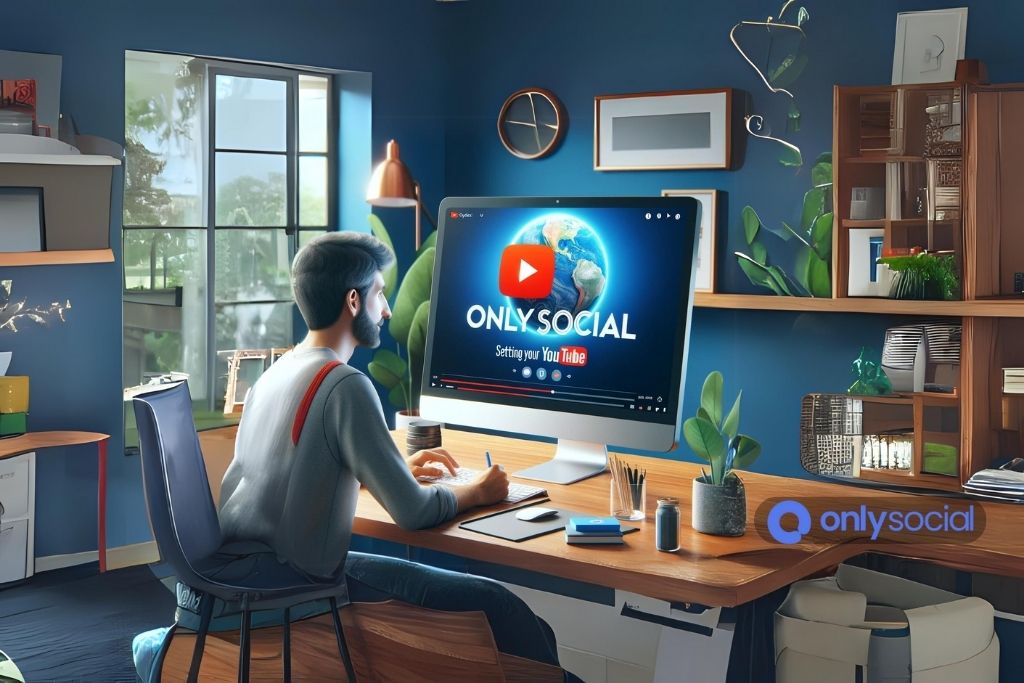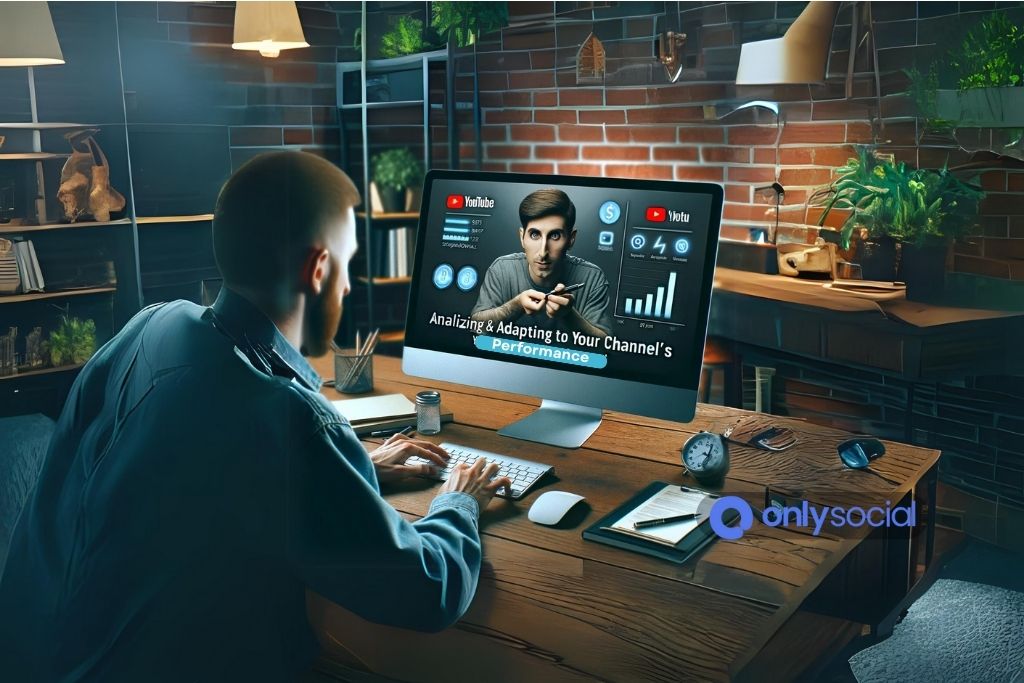The Ultimate Guide to YouTube Channel Management for Creators and Brands in 2025

In today’s digital landscape, it’s no secret that YouTube has emerged as one of the most influential platforms for creators and brands alike. With over 2 billion logged-in monthly users, it offers vast potential for those looking to engage an audience through video content. However, unlocking YouTube’s true potential requires more than just uploading great videos.
To thrive on this platform, one must take a strategic approach to YouTube channel management. In this blog post, we’ll delve deep into the world of YouTube channel management, providing you with actionable insights and strategies for growth and engagement. No matter your starting point, you’ll walk away with a better understanding of what it takes to run a successful YouTube channel that resonates with viewers on a personal level. So, let’s embark on the journey toward mastering YouTube channel management together.
Table of Contents
- 1 Setting up Your YouTube Channel
- 2 Optimizing Channel and Video Metadata
- 3 Analyzing and Adapting to Your Channel’s Performance
- 4 Community Engagement and Moderation
- 5 Analyzing and Adapting to Your Channel’s Performance
- 6 Collaborating and Building Relationships
- 7 BONUS
- 8 Frequently Asked Questions
- 8.0.1 How can I effectively manage my YouTube channel?
- 8.0.2 What are the key factors to consider for YouTube channel growth?
- 8.0.3 How do I increase the visibility of my YouTube channel?
- 8.0.4 How can I engage more with my YouTube viewers?
- 8.0.5 How can I understand my YouTube channel’s performance?
- 8.0.6 What are the benefits of collaborating with other YouTube creators?
- 8.0.7 How can I monetize my YouTube channel?
Setting up Your YouTube Channel
The initial step on your YouTube Channel management journey is, of course, creating your channel. This is an often overlooked step but lays down the foundation of your endeavor. Let’s break down the process.
Account Creation
Before you can begin uploading videos, you’ll need a Google account. With an account, you’re halfway there to have your own YouTube channel. You’ll simply need to go to YouTube, sign in, select your account logo at the top-right, and finally, click on “create a channel.”
Channel Customization
After you’ve successfully created your YouTube channel, you’ll want to customize it. This helps provide a consistent and recognizable appearance for your audience.
When customizing your channel, consider the following aspects:
- Channel Art: This is what viewers will see on your channel’s homepage. It’s one of the first ways to capture your audience’s attention. Make sure this resonates with your brand and its tone. This will go a long way in establishing a visual identity for your brand on YouTube.
- Channel Trailer: This acts as a teaser for your content. Make sure to showcase the best of your work, giving potential subscribers an idea of what they can expect.
- About Section: Your audience needs to know who you are and what they should expect from your videos. The “About” section is an opportunity to tell your story and engage with your audience.
Importance of Branding
Don’t forget the importance of branding in YouTube channel management. An effective brand strategy on YouTube gives you a competitive edge in ever-changing markets. Your brand defines your channel, gives it an identity, and tells your viewers what they can expect. Branding is much more than a name or a logo; it’s each interaction you have with your audience.
Simple things like using consistent color schemes, creating a unique logo, and using consistent voice and tone across your videos can significantly impact how viewers perceive your channel and, in turn, lead to higher subscriber counts and viewer engagement.
Optimizing Channel and Video Metadata
An essential aspect of YouTube channel management is accurately optimizing channel and video metadata. Paying attention to these details can significantly enhance your videos’ performance in the YouTube algorithm and improve search visibility. Metadata is data that describes other data, and in the context of YouTube, metadata includes video titles, descriptions, tags, and thumbnails.
Choosing the Right Keywords
Keyword research is crucial in optimizing your metadata. Identifying the right keywords ensures your videos appear in relevant searches and reach your target audience.
To find keywords that your audience is searching for, you may use the following methods:
- YouTube’s search bar suggestions
- Exploring keywords used by competitors
- Utilizing tools like Google Trends, VidIQ, and TubeBuddy
Once you’ve discovered suitable keywords, be sure to incorporate them in your video titles, descriptions, and tags.
Creating Engaging Titles, Descriptions, and Tags
Strategic placement of keywords in your metadata is vital for YouTube channel management. Here are some pointers to keep in mind:
- Video Titles: Aim for titles that are concise, engaging, and include the main keyword. Avoid clickbait, as this can lead to a higher bounce rate and hurt your channel’s reputation.
- Video Descriptions: Write comprehensive descriptions containing relevant keywords that outline your video content. The first few lines should be captivating to grab your audience’s attention and encourage them to watch the entire video. Descriptions can also include video timestamps to help viewers quickly navigate to specific points in the video.
- Video Tags: Tags help YouTube understand the context of your video and improve searchability. Use a combination of specific and broad tags relevant to your video content, and be sure to include your main keywords.
Importance of Closed Captions and Subtitles
Integrating closed captions and subtitles is an often overlooked aspect of metadata optimization, but it plays a significant role in YouTube channel management. By adding accurate closed captions to your videos, you improve accessibility for viewers who are deaf or hard of hearing. Subtitles also create opportunities for viewers who speak different languages to enjoy your content.
Moreover, closed captions and subtitles can improve your video’s SEO performance, as YouTube indexes these subtitles while generating search results. Overall, investing time in closed captions and subtitles for your videos is a smart move when managing your YouTube channel.
Analyzing and Adapting to Your Channel’s Performance
An integral part of successful YouTube channel management involves regular analysis of your channel’s performance and adjusting your strategies based on the data insights. YouTube provides a comprehensive analytics platform for channel owners to track their performance, identify strengths and weaknesses, and make data-backed decisions to enhance their channel’s growth and audience engagement.
Using YouTube Analytics
YouTube Analytics offers a wealth of data about your channel and individual videos. It is an essential tool irrespective of your channel size, as it provides insights into what’s working and what’s not. Here are the various types of data you should be keeping an eye on:
- Watch Time: This metric shows the total amount of time viewers have spent watching your videos. YouTube prioritizes videos and channels with higher watch times in its algorithm, so striving to increase this metric can significantly improve your channel’s visibility.
- Audience Retention: Audience retention data shows how well your videos hold viewers’ attention. High viewer retention can lead to higher rankings in search results.
- Engagement Metrics: These metrics include likes, dislikes, comments, and shares. High engagement on a video indicates that viewers found it valuable, exciting, or worth sharing. These insights can inform content creation strategies.
- Traffic Sources: This metric tells you where your viewers are coming from, such as search results, suggested videos, or external websites. Understanding traffic sources helps tailor your YouTube promotion strategy.
- Demographics: Understanding who watches your videos (their age, gender, location, etc.) can help create content suited to your audience’s preferences.
Evaluating Viewer Retention, Demographics, and Traffic
The numbers regarding viewer retention, demographics, and traffic provide valuable insights for channel growth. For example, if a high percentage of viewers are dropping off at the start of your videos, you may want to reevaluate your intros. If your viewers are mainly from a particular region or country, consider creating content that resonates with cultural norms or addresses local issues relevant to your niche.
Adapting Strategies Based on Data Insights
With the data from YouTube Analytics, you can make informed adjustments to your strategies. Perhaps your view times are highest on specific days of the week, signaling the best time to upload new content. Or, your audience may engage more with a particular type of content, indicating the direction in which to focus future videos.
Remember, effective YouTube channel management is not about implementing strategies once and forgetting about them; it’s constantly analyzing, learning, and adapting to ever-changing viewer preferences and behavior. Embrace data as your guiding light, and your YouTube channel will surely find its path to success.
Community Engagement and Moderation
In the world of YouTube channel management, creating and posting content isn’t your only task. Engaging with your community and implementing viewer-focused moderation is key to building a loyal fanbase—a factor that separates successful channels from the rest.
Building Your Community
Developing a sense of community around your YouTube channel can foster viewer loyalty, increase engagement, and promote organic growth. Here are a few strategies to help build and nurture a supportive community:
- Communication: Keep the lines of communication open. Respond to comments, engage with your viewers on other social platforms, and consider creating community posts or polls to allow your viewers to share their opinions.
- Viewer-Shout Outs: Acknowledging viewers by giving shout-outs in your videos or featuring user-generated content can make viewers feel acknowledged and appreciated. This can strengthen their connection and loyalty to your channel.
- Live Streams: Live video sessions or Q&As allow real-time interaction with your viewers. This not only provides immediate engagement but also allows your audience to feel a more personal connection with you.
Moderation Management
Moderation is another critical aspect of managing a YouTube channel. Ensuring your YouTube channel remains a safe and enjoyable space encourages positive interaction, fosters community spirit, and discourages negative activity.
Here are a few moderation tools to consider:
- Community Settings: YouTube allows you to add approved users and moderators, block specific users, hide comments with certain words, or even hold all comments for review.
- Comments Management: Regularly monitor your video comments, respond to any questions or positive feedback, and don’t hesitate to delete offensive, harassing, or spam comments.
- YouTube’s Reporting System: In severe cases, you can use YouTube’s reporting system to handle users who violate YouTube’s Community Guidelines.
Facilitating Positive Interaction
As part of your YouTube channel management duties, aim to facilitate a respectful and positive online environment. Encourage viewers to interact with each other in a friendly manner and discourage harmful or disrespectful behavior.
Community engagement and moderation play vital roles in creating a successful YouTube channel. By giving your viewers a sense of belonging and ensuring a positive environment, you cultivate a community that will support you and your endeavors on the platform.
Analyzing and Adapting to Your Channel’s Performance
As an integral part of YouTube Channel Management, one must constantly monitor and measure parameters to understand how their channel is performing. Remarkably, the analysis doesn’t end once you’ve garnered data. It’s crucial to interpret this data accurately and use it to adapt your strategies, shaping your content to better satisfy the audience’s needs and preferences.
Utilizing YouTube Analytics
YouTube provides a robust analytics tool that records extensive data on your video views, subscribers, watch time, revenue generated, and more. Leverage these metrics and reports to gain insights that can guide your content strategy and foster channel growth.
Key metrics to consider:
| Metrics | Importance |
|---|---|
| Watch Time | Accounts the total amount of time viewers have spent watching your videos. YouTube values this metric and uses it to determine your position in search results. |
| Audience Retention | A measure of how well your videos retain viewers. If viewers watch your videos to the end, YouTube is more likely to promote your videos. |
| Engagement | Metrics such as likes, comments, shares, and subscriber count. High engagement rate makes your video more likely to be promoted by YouTube. |
| Traffic Sources | Shows where your video viewership is coming from. It can inform you about successful referral sources and where to focus your promotional efforts. |
| Demographics | Helps you understand who watches your videos, thus enabling you to create content that appeals to your audience. |
Adjusting Based on Insights
Armed with these key insights from YouTube analytics, you can adjust your YouTube channel management strategies. For instance:
- If certain types of videos gain more views or better audience retention, consider creating more of this type of content.
- If you observe higher engagement at a specific time, consider adjusting your upload schedule accordingly.
This way, every course of action you take will be informed, focused, and beneficial.
Effective YouTube channel management is an ongoing process of analysis, adaptation, and improvement. Continuously revise your strategies based on performance data to optimize your channel for success.
Collaborating and Building Relationships
Integral to YouTube channel management is the ability to form collaborations and build relationships. A YouTube channel doesn’t exist in a vacuum—it thrives within a community of creators, viewers, and industry stakeholders. Establishing meaningful relationships can boost channel growth, and audience engagement, and even open doors to sponsorship and brand partnership opportunities.
Collaborating with Other YouTube Creators
Collaborating with other creators can bring fresh content to your channel and expand your reach by exposing your channel to another creator’s audience. It’s an effective way to gain new subscribers, increase views, and build a supportive network of peers within the YouTube community.
When planning collaborations, keep these tips in mind:
- Identify creators within your niche or ones who produce content that complements your own.
- Make sure the collaboration benefits both parties.
- Plan a clear, creative direction for the collaborative content to maximize its impact.
Building Relationships with Your Viewers
Fostering a strong bond with your viewers is critical. These individuals comprise your audience, your community, and can transform into brand ambassadors for your channel. Here’s how to strengthen the relationship with your viewers:
- Engage Regularly: Respond to comments on your videos, acknowledge viewer feedback, participate in discussions, and show appreciation for their support.
- Create Community Content: Consider content specifically focused on your community, such as Q&A’s, shout-outs, or featuring user-generated content.
- Encourage Participation: Make your viewers feel a part of your channel by involving them in decisions, like asking for content suggestions or feedback on potential video ideas.
Networking with Industry Stakeholders
Networking with business stakeholders such as brands, content agencies, distributors, and sponsors can provide opportunities for channel monetization. Building these professional relationships can result in collaborations, sponsorships, and exposure to broader audiences.
In conclusion, fostering connections in all possible directions—horizontal (with other creators), vertical (with industry stakeholders), and inward (with your viewers)—is central to effective YouTube channel management. After all, YouTube is a social platform, and succeeding in a social environment is all about building and nurturing relationships.
BONUS
Ready to elevate your YouTube game in 2025? Meet OnlySocial, your ultimate ally in social media mastery. Unleash the power of our Post Planning and Scheduling function, seamlessly syncing your content across all platforms. With unlimited posting and the ability to manage countless social profiles, OnlySocial empowers you to dominate the digital landscape effortlessly. Take charge of your success – sign up for our commitment-free 7-day trial today.
Frequently Asked Questions
How can I effectively manage my YouTube channel?
Effective YouTube channel management involves several aspects such as uploading consistent, high-quality content, optimizing videos for SEO, engaging with your community, moderating comments, analyzing your channel’s performance, and adapting to trends and feedback.
What are the key factors to consider for YouTube channel growth?
Aside from creating engaging content, you need to optimize videos with SEO-friendly titles, descriptions, and tags, use attractive thumbnails, build community through viewer interaction, collaborate with other creators, and analyze your performance analytics.
How do I increase the visibility of my YouTube channel?
To increase your channel’s visibility, make sure your content is SEO-optimized to appear in YouTube search results. Also, promote your content across other social media platforms and consider collaborations to reach new audiences.
How can I engage more with my YouTube viewers?
You can engage with your viewers by responding to comments, creating polls, starting discussions in your community tab, giving shout-outs in your videos, and incorporating viewer suggestions into your content.
How can I understand my YouTube channel’s performance?
Use YouTube Analytics to measure key metrics such as view count, watch time, audience retention, engagement, traffic sources, and demographics. Analyzing these metrics can provide valuable insights into your channel’s performance and viewer behavior.
What are the benefits of collaborating with other YouTube creators?
Collaborating with other creators can offer fresh content ideas, expose your channel to a new audience, increase viewership and subscribers, and foster a supportive network within the YouTube creator community.
How can I monetize my YouTube channel?
Monetize your channel through the YouTube Partner Program that includes ads, channel memberships, merchandise shelf, and Super Chat. Besides, you can also gain income from brand partnerships and sponsorships.




